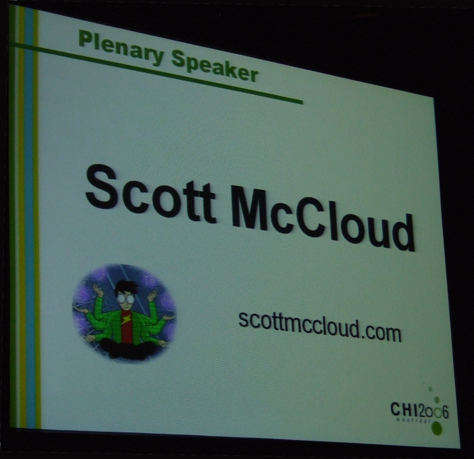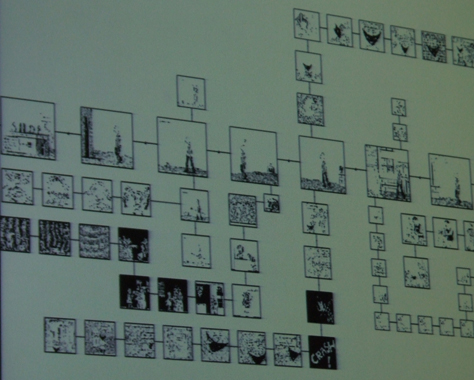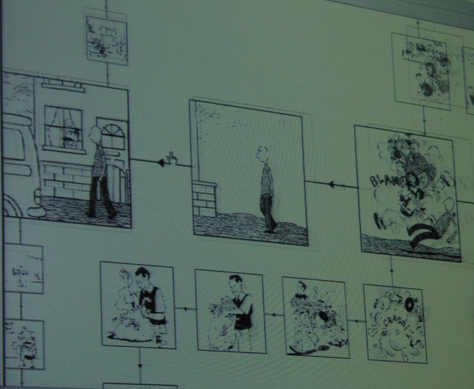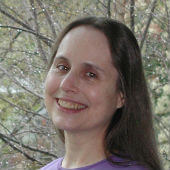Course: The Art of Speaking: Advanced Skills for the Lecture Hall and the Hallway
Presenters: Deborah A. Boehm-Davis and Lisa B. Marshall
Another half-day course, “The Art of Speaking: Advanced Skills for the Lecture Hall and the Hallway,” covered some special challenges of public speaking, including how to handle question-and-answer (Q&A) sessions, overcome presentation disasters, give an elevator pitch, present a poster, and organize and chair a panel session. Boehm-Davis and Marshall’s advanced course on public speaking skills was also excellent.
Handling Q&A Sessions
A Q&A session follows most presentations, but some speakers prefer that people ask questions during their talks. Boehm-Davis and Marshall had the following suggestions for handling Q&A sessions effectively:
- “Anticipate and rehearse tough questions.”
- Establish ground rules
for asking questions, for example:
- Encourage people in the audience to either wait to ask questions until the end or ask them during the talk.
- Have people in the audience write down questions.
- Request people to stand in a queue at a microphone to ask questions.
- Initiate the Q&A session yourself or have a moderator facilitate it.
- If necessary, use a commonly asked question to get things rolling.
- Prepare some slides giving more detail on certain points.
Here are Boehm-Davis and Marshall’s tips for answering questions:
- Maintain eye contact with the person asking the question, actively demonstrating your interest and attention.
- Concentrate and listen to the entire question.
- To make sure you understood the question, repeat or paraphrase it.
- If necessary, “ask a question about the question.”
- “Take time to think before every answer.”
- Don’t compliment the question.
- Keep your response focused.
- Organize your response in one of the following ways:
- past / present / future or vice versa
- problem / solution
- pros and cons
- similarities and differences
- levels in a hierarchy, phases, or steps
- categories
Boehm-Davis and Marshall showed us how to handle difficult questioners, acting out a variety of situations we might encounter:
- a rambler—“First you need to stop him from speaking. Say, ‘Alright, then,’ and hold up your hand” in a stop gesture. If the person asked a question, say, “If I heard you correctly, you asked…” and succinctly paraphrase the question. Make eye contact and answer the question. Otherwise, say, “Thank you for your comment. Does anyone else have a question?”
- a stage hog—If someone asks too many follow-up questions, answer only the questions you choose to answer. “Just because someone asks you a question, that doesn’t mean you have to answer it. You have to remain in control,” said Marshall. After answering concisely, break eye contact and move on to the next questioner.
- an interrupter—If someone interrupts and asks you a question about a topic you intend to discuss later in your talk, say, “I’ll get to that later.” Usually, it’s best to follow your planned sequence. However, you can give a brief answer, then cover the topic in full later.
- someone asking a question
- that isn’t relevant to the audience—Either say, “That’s really beyond the scope of this presentation,” or answer very briefly.
- about work with which you’re not familiar—Say, “I’m not familiar with that,” then either ask, “Could you quickly summarize?” or suggest that the person talk with you after the Q&A session.
- for which you don’t know the answer—Just say, “I don’t know.”
- a hostile questioner—When dealing with hostile questioners, “don’t get defensive—remain calm and focused,” said Marshall. “[If you] get defensive, the audience will get uncomfortable. Let them say whatever they want. Listen while they vent. Paraphrase what they say and feel, without being condescending. Ask probing questions to get at their real issues. Disagree without becoming disagreeable. Remain in control. Don’t respond to the attack. Just assume the guy had a bad day and move on.”
When you respond to the question, break eye contact and turn away from that person. Boehm-Davis and Marshall gave us some possible responses to hostile questions, as follows:
- “So, what I heard is this: You disagree for these reasons…. Allow me to respond.”
- “While we agree on …, it is clear we disagree about ….”
- “I know what your issues are. Now, I’d like to respond.”
- “Let’s discuss this after the presentation.”
Boehm-Davis and Marshall said, “Value the thoughts and feelings of the questioner, and the audience will respect you.” Let the audience know when time is running out by saying, “I’ll take one or two more questions.” Then, “if you get a hostile question, take at least one more question afterward.” If more people have questions, offer to talk with them after the presentation. In conclusion, “thank the audience for their questions and comments.”
In response to questions from the audience, Boehm-Davis and Marshall also demonstrated many effective techniques for moderating meetings in situations when many people want to speak at once.
Overcoming Presentation Disasters
When speaking about how to overcome presentation disasters, Marshall told us, “You’re not supposed to tell the audience when you have a disaster. There’s no need to draw attention to it. If you relax and keep smiling, the audience will respond the same way you do.” Possible disasters and solutions to them include the following:
- You have much less time for your presentation than was planned.—Your presentations should always include “nice-to-knows and should-knows.” Hide the PowerPoint slides you won’t be using.
- “You lose your train of thought mid-sentence.”—“It’s okay. … Just move on to the next point” or say one of the following:
- “Where was I? ”
- “I’m just going to backtrack a bit, so we can get back on point.”
- “Your throat dries out.”—Drink some water. If there isn’t any water, bite your tongue to get some saliva flowing.
- “The projection equipment dies.”—“Always have a printed copy of your presentation with you, so if your computer goes out, you can go on. Ask someone else to solve the problem. Physically remove yourself as far from the distraction of the problem as you can, so people focus on you, not on the activity involved in fixing the problem. You’re competing for attention, so exaggerate your gestures; raise your voice. People will be impressed if you can carry on well.” If you get your slides back after a few slides, “quickly show the slides you’ve covered, then go on. If there’s no one to help, say, ‘Let’s take a five minute break to fix the problem.’ Don’t try to multitask. Never try to solve a problem yourself. That’s not your job. Your job is to communicate.”
- “You planned to work through a handout page by page, but people are moving ahead at their own pace.”—Say, “We’re now looking at slide number….”
- “Several people start a side conversation while you are speaking.”—“Look at them or walk toward them.” If necessary, say, “I must have said something confusing. Can I help clarify anything?”
- The audience is much larger than you expected.—Relax.
- “You are face to face with a sleeper.”—Look at someone else.
Giving a Hallway Talk or Elevator Pitch
According to Boehm-Davis and Marshall, to increase your credibility, you should be able to describe precisely what you do—or want to do—in 45 seconds or less. Such sound bites are useful in all kinds of situations—for example, when speaking “with someone who is not knowledgeable in your specific field” at work, fund-raisers, or mixed meetings with people having varied backgrounds. They also make great introductions when you’re a guest lecturer. As an exercise, Boehm-Davis and Marshall had each of us write out a description of what we do professionally, using the following format:
“I work in the area of [A] …”
(A = Your field, broadly speaking.)
“Specifically, in the area of [B] …”
(B = Your specific field or area of interest.)
“This work is important because of [C] …”
(C = How your work provides benefit.)
“My specific work is [D] …”
(D = The specific problem you’re solving or your specific work.)
“So far, the results have shown [E] …”
(E = The very specific or quantitative results of your work.)
Optionally—“Which has been [F] successful.”
(F = The degree to which your work has contributed to success.)





